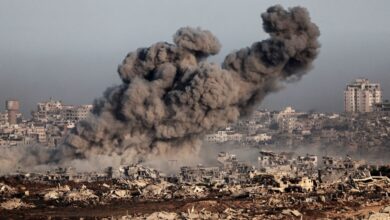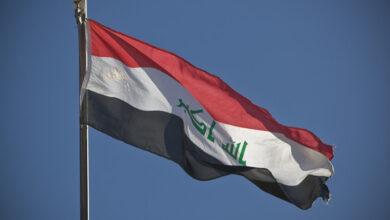Originally published in Cairo 1995, “East Winds, West Winds” is a milestone for both author Mahdi Issa al-Saqr and Iraqi literature in general. The book shines the spotlight on a culture that is foreign to many Arab readers who are used to the trademark style of Egyptian and Syrian novelists.
Compared to the rest of the Arab world, the Iraqi cultural scene is quite neglected; political news about the troubled region usually trumps any cultural news. In April, however the American University of Cairo Press decided to release a translation of “East Winds, West Winds.”
Translated by Paul Starkey, a professor of Arabic at Durham University in the United Kingdom, the novel was released four years after al-Saqr’s death from a terminal illness on 14 March, 2006. The author left behind a great deal of writing, such as “Mogrimoon Tayeboon” (Good Criminals), “Waga’ al-Kytaba” (The Pain of Writing), and “Bayet Ala Nahr Degla” (A House on the Tigris River).
Describing his first impression of the novel, Starkey says, “[I] thought that it was very slow moving, and longer than it needed to be,” though the translator’s first impression changed on further acquaintance with the work.
This novel, written in various narrative modes, including the rare second person, can be considered an autobiography of the author himself, who spent years working in the oil fields of Basra, a southern city in Iraq. Hints of first person and third person narration captures the eyes as well.
“There is also the author's use of change of perspective,” adds Starkey, “so that while most of the first half of the book is seen through the eyes of Mohamed, the perspective in the second half is more varied, and we see things through the eyes of a number of different characters.”
Set in the 1950s, the novel’s plot follows Mohamed Ahmed, a quite perceptive character, who spends years working under the British in the oil fields. We join him on his trip to the camp where he is to spend years working with different and extreme characters such as Abu Jabbar, Hussein, and Istifan, and fall in and out of love with the traditions and social customs of the British Empire.
Between the basic camp of Iraqis working in the field and the British administration offices, bright with wealth, the author tells stories of love relationships, children born away from their fathers, and people dying suddenly. He takes you on a journey to an unfamiliar world, and manages to bring you back breathless.
Arabic is a descriptive language by nature, but al-Saqr takes it to an extreme. It was occasionally hard to follow the extreme details in the English translation regardless of how effective the translation was.
However, Starkey debates this claim. “What is a 'descriptive' language?” the translator wonders, “Is Arabic any more 'descriptive' than English? I can't think that the 'descriptiveness' of the writing would pose any particular problem for an English reader in itself, though different English readers (just like different Arab ones) may of course have different reactions to the author's particular style, or indeed the subject matter.”
After finishing the book, the reader can’t help but connect the events and the clashes of the cultures depicted in the book to current events in the region.
“One can hardly read the novel without thinking of later events,” says the professor, “but on the other hand, I think that it is a mistake to go on pursuing the comparisons too far. It doesn't do anyone any good to pretend that the situations are a precise parallel, because they're not.”
Years before the nationalization of the oil companies in the area, which took place in 1972, a sandstorm of emotions, love, and social clashes took place. Two different winds collided. These two winds created a tornado in the land of Iraq, and this book tells the story of that tornado.




